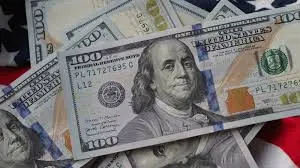High‑quality counterfeit banknotes—those that look convincing at a glance—pose a real risk to retailers, hospitality staff, market traders, and ordinary people. In the UK, modern polymer banknotes include sophisticated security features that are difficult to reproduce perfectly. Still, sophisticated criminals sometimes produce passes that can fool an untrained eye. This guide explains how to spot suspicious notes, what to do if you find one, the legal position, and practical prevention steps you can take.
Why this matters
Accepting counterfeit notes is a direct financial loss: banks and authorities will not reimburse you for fake notes you accepted. Beyond the immediate loss, repeat incidents can indicate organised fraud targeting a neighbourhood or sector. Knowing simple, non‑technical checks and having calm procedures reduces both losses and risk to staff.
What genuine UK banknotes generally include (overview)
Modern UK banknotes (including Bank of England polymer notes and notes issued by Scottish and Northern Irish banks) use polymer substrates and layered security features. Typical visible protections include a transparent window with holographic or foil elements, raised print, microlettering, fine-line background patterns, and features visible under ultraviolet (UV) light. These features are designed to be checked by sight, touch and with inexpensive devices; successful counterfeits rarely mimic all layers perfectly.
(Note: this article focuses on detection and prevention only and does not provide any information that could help create counterfeit notes.)
Quick routine checks everyone should learn: “Feel, Look, Tilt”
Train staff to use a short, confident routine so checks are fast and non-confrontational:
-
Feel — modern polymer notes have a distinctive, slightly slippery feel compared with ordinary paper. Raised print (especially on the portrait and denomination) should be tactile.
-
Look — examine the clear window; real windows contain specific foil/holographic elements and crisp microlettering. Portraits and line work should be finely detailed, not blurred.
-
Tilt — tilt the note to see shifting holograms or colour‑changing foils. Moving or shifting effects are difficult for counterfeiters to reproduce accurately.
If in doubt, use a magnifier to check microprint or a UV torch to reveal fluorescent features. Avoid relying on a single tool such as a marker pen—polymer notes behave differently from older paper notes, and marker pens can be misleading.
Handling suspected counterfeit notes — calm and documented
If you suspect a note is fake, follow a consistent, safe procedure:
-
Don’t return the note to the customer. Politely say you need to verify the note and offer an alternative payment method.
-
Minimise handling. Place the suspected note in an envelope or folder to preserve potential forensic evidence (fingerprints, fibers).
-
Record what happened. Note the date, time, transaction amount, and a brief description of the customer (appearance, direction they left, vehicle details if applicable). Preserve CCTV footage.
-
Contact the police. Report suspected counterfeit currency to local police; they’ll advise whether to hand the note over or pass it to the appropriate authority for examination.
-
Inform your bank. Your bank can advise on how to proceed and whether to accept the note for testing under police instruction.
-
Avoid confrontation. Do not attempt to detain or interrogate the person who passed the note. Counterfeiting can be linked to organised crime; safety first.
Legal context — concise
Passing counterfeit currency is a Buy high quality counterfeit money UK offence in the UK. Individuals found producing, distributing, or knowingly passing fake notes can face prosecution. Businesses that unknowingly accept counterfeit notes are treated as victims and should cooperate with the police. Always give suspected notes to law enforcement rather than trying to handle the situation privately.
Practical prevention measures for businesses
-
Train staff regularly. Short refresher sessions (10–15 minutes) using real examples and role‑play help employees keep the checks instinctive.
-
Make checks routine and visible. A small sign at the till — “We check cash for authenticity” — normalises checks and reduces awkwardness.
-
Invest in modest tools. A UV torch, a small magnifier, and a laminated reference card showing genuine features are inexpensive and effective.
-
Improve physical security. Clear CCTV coverage, good lighting at tills, and mirror placement where needed deter fraudsters and provide evidence.
-
Use layered defences. Combine human checks with simple devices and back‑office checks (e.g., count and inspect cash at shift change).
-
Share intelligence locally. If multiple businesses experience similar notes or incidents, report the pattern to local police and business associations — coordinated intelligence helps investigations.
Why high‑quality fakes still fall short
Even sophisticated counterfeits rarely get every security feature right. Modern banknotes combine tactile, visual and machine‑readable elements; reproducing all of them accurately (including specialized substrates and microprinting) is extremely difficult. Routine layered checks and modest detection tools catch most fakes and deter opportunistic criminals.
Final thoughts
High‑quality counterfeit notes are worrying, but they are manageable. Treat detection as a routine safety habit rather than an accusation—regular staff training, inexpensive tools, clear procedures, and prompt reporting protect your money, your staff, and the wider community. If you’d like, I can now prepare one of the following immediately: a printable till‑side checklist, a one‑page staff‑training script with role‑play, or a 1,000‑word SEO‑optimised article targeted to a specific UK city or business sector. Which would you like?




Share this page with your family and friends.